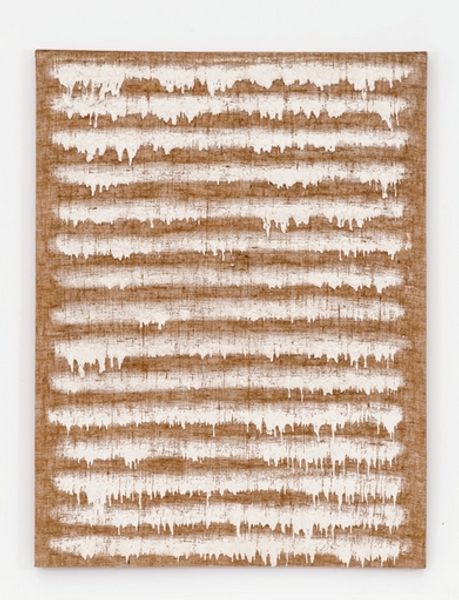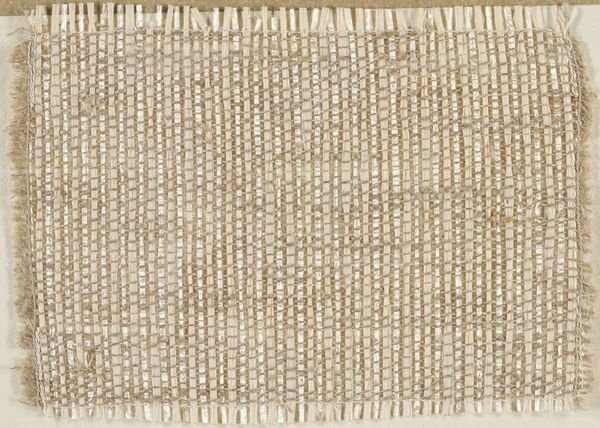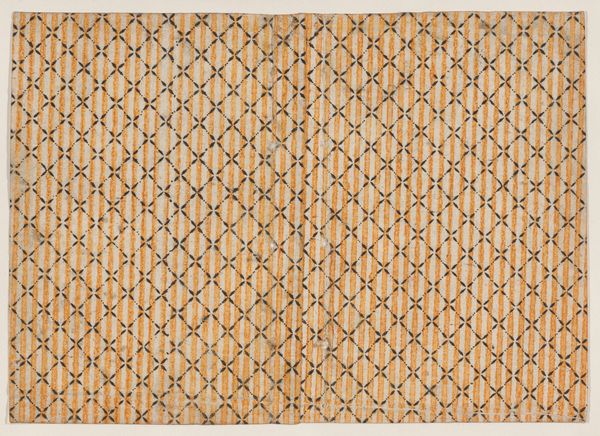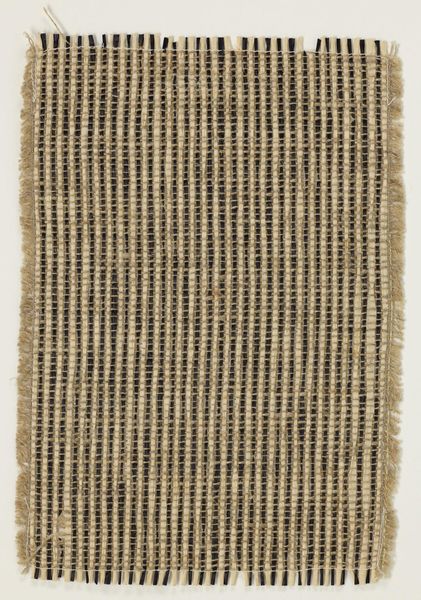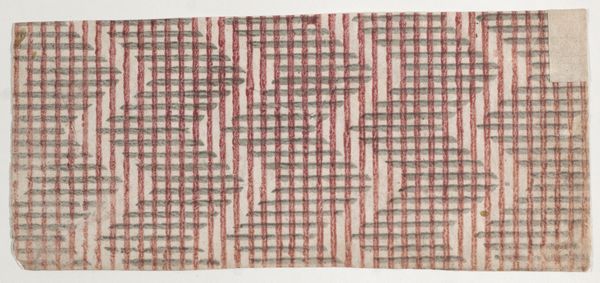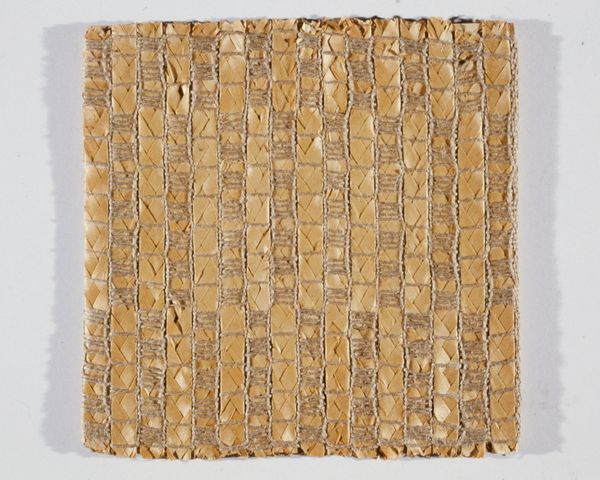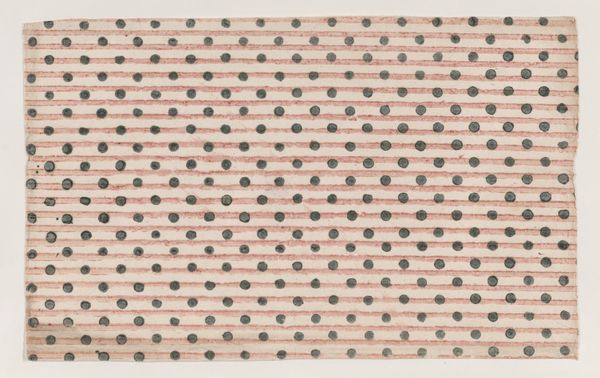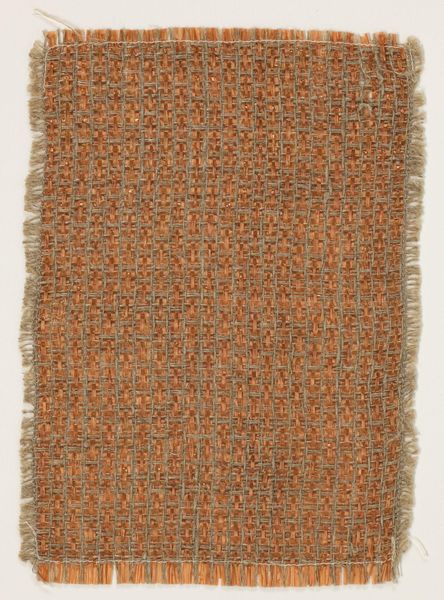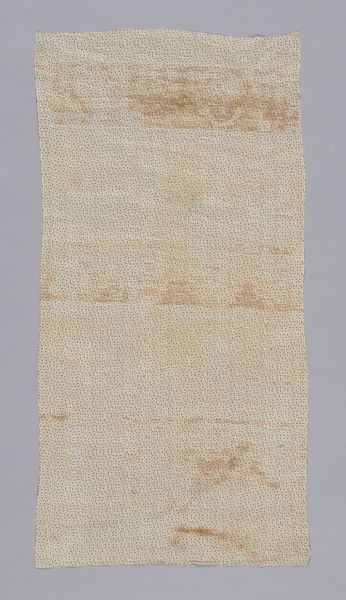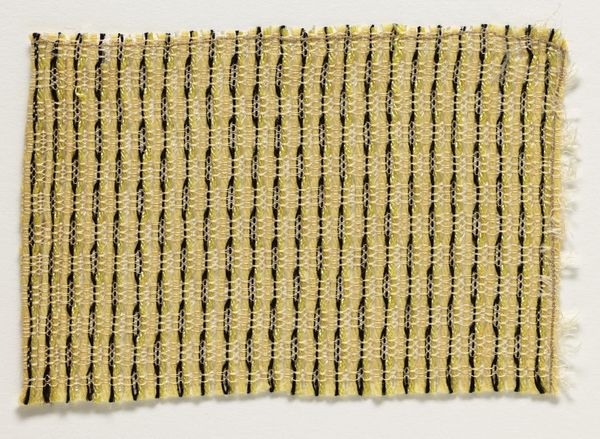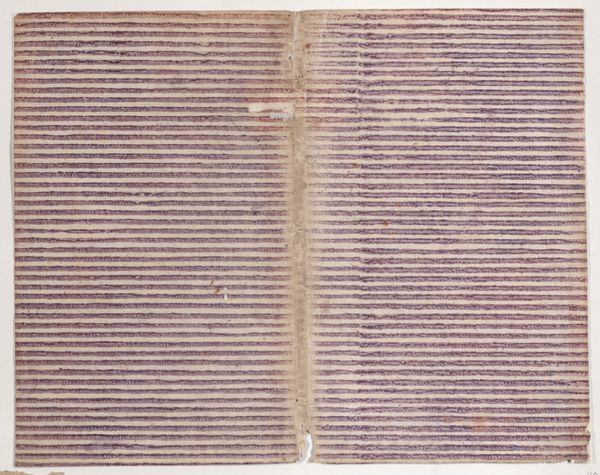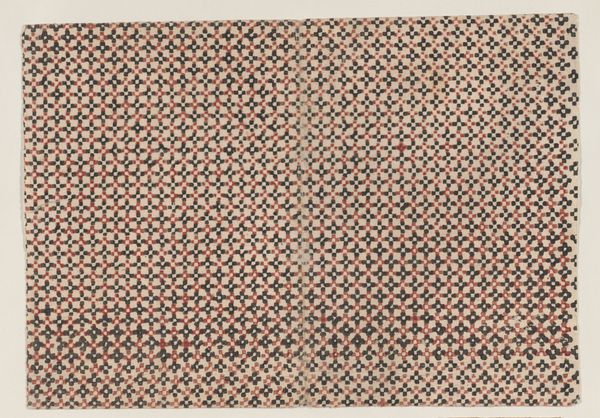
Sheet with overall stripe pattern with squiggly lines 1800 - 1900
0:00
0:00
drawing, paper
#
drawing
#
natural stone pattern
#
naturalistic pattern
#
paper
#
abstract pattern
#
organic pattern
#
repetition of pattern
#
vertical pattern
#
line
#
pattern repetition
#
textile design
#
imprinted textile
#
layered pattern
Dimensions: Sheet: 7 3/4 × 9 5/8 in. (19.7 × 24.5 cm)
Copyright: Public Domain
Editor: So, this is a textile design, "Sheet with overall stripe pattern with squiggly lines," dating from 1800 to 1900, by an anonymous artist. It’s at the Met. What I immediately notice is how dense the pattern is; it's almost dizzying to look at. What do you make of this piece? Curator: I think the density is key, but it's also important to understand that pattern design in this era wasn't just about aesthetics. It was intrinsically tied to economic and social structures. Who was producing textiles like this, and for what market? Was this meant for an elite clientele, or something more widely accessible? Editor: I hadn't considered the economic angle. So, you're saying the very act of creating this intricate design is linked to broader social forces? Curator: Precisely. The Industrial Revolution had a massive impact. The ability to reproduce patterns mechanically changes the social equation of design. How does handmade quality relate to its mechanized reproduction? Are these repetitive shapes referencing nature, and if so, how is nature being utilized and controlled during industrial growth? Editor: That’s fascinating! The evenness of the pattern really hides a lot of tension then. It speaks of industrialization and consumption, rather than some kind of utopian artistic vision. Curator: Yes, consider also the role of institutions like the Met in preserving and displaying a “fragment” such as this textile sheet. What kind of stories are museums wanting to tell, or not tell, with pieces like these? Who is this history for? Editor: It seems there’s much more depth beneath this surface than meets the eye. It prompts so many new directions for me. Thanks for illuminating this, considering the forces at play behind its design really enriches it! Curator: Absolutely, looking beyond the visual to the forces of production and consumption really helps ground the artwork in historical and social meaning.
Comments
No comments
Be the first to comment and join the conversation on the ultimate creative platform.
